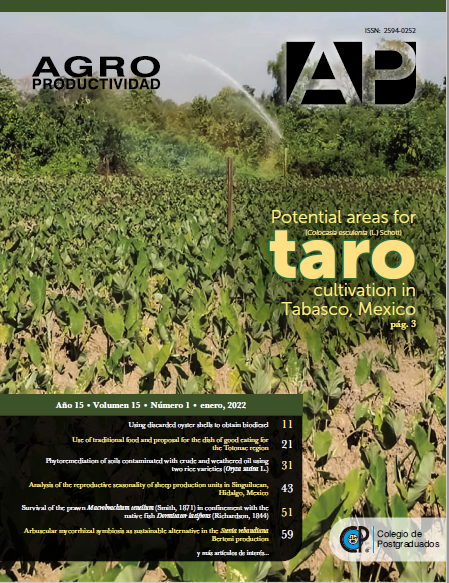Identification of Pseudomonas viridiflava, causal agent of onion (Allium cepa L.) bulb rot
##plugins.themes.bootstrap3.article.main##
Keywords
pectinolytic bacteria, 16S rRNA, pathogenicity, vegetables.
Resumen
Objective: To phenotypically and molecularly characterize and identify the causal agent of onion (Allium cepa
L.) bulb rot in Morelos, Mexico.
Methodology: Fluorescent bacteria from onion bulb tissue with symptoms of rot were isolated; the LOPAT
test was used to describe them and subsequently they were identified by partial 16S rRNA gene amplification.
Pathogenicity in vegetables and plants was evaluated injecting a suspension with 108 CFU mL-1
of the pathogen.
Results: Phenotypic characterization and 16S rRNA nucleotide sequencing showed 100% identity with
Pseudomonas viridiflava as the causal agent of onion bulb rot. The pathogen caused infection in broccoli (Brassica oleracea L.), spring onion (Allium fistulosum L.), purple onion (Allium cepa L.), cauliflower (Brassica oleracea var. botrytis L.), leek (Allium porrum L.), and carrot (Daucus carota L.), as well as in plant species such as jalapeño pepper (Capsicum annuum var. annuum L.), bean (Phaseolus vulgaris L.), and tomato (Solanum lycopersicum L.).
Implications: This information is important for agriculture in Mexico. Pseudomonas viridiflava is a bacterial
pathogen with high potential to infect new hosts. This is the first report of P. viridiflava causing onion rot in Mexico.
Conclusions: Pseudomonas viridiflava is the causal agent of onion bulb r

